Archive for year: 2018
In Conversation with: Prof Deidre Byrne
/in News/by CSAGThe CSA&G’s Gender Justice Partnership has published the second episode of its ‘In Conversation with…’ series. In this episode they are in conversation with Prof Deidre Byrne from Unisa’s Institute for Gender Studies.
The Good, the Bad and the Deadly
/in News/by Johan MaritzAs part of the Deadly Medicine exhibition that was on display at the Merensky Library in September, the University of Pretoria’s Centre for Sexualities, AIDS and Gender (CSA&G) hosted a range of speakers whose topics have engaged staff, students and members of the broader community in debates on ethics and medicine. These thought provoking seminars included presentations from UP’s Dr Glen Ncube, lecturer in the Department of Historical and Heritage Studies, and Prof Laurel Baldwin-Ragaven, from the Faculty of Health Sciences at Wits, on the history of medical ethics in South Africa.
Dr Ncube made the point that as well as its troubled history, South Africa has also been home to leaders in the fields of medical ethics and community-based health services. In the post war era, for example, Cape Town based researcher Dr Michael Gelford shone a light on unethical research practices involving African participants who had not given informed consent. Gelford’s interest in medical ethics stemmed from his Jewish background and the awareness of the ‘Deadly Medicine’ practiced by the Nazi’s during the second World War.
Community healthcare was also a feature of progressive South African mid twentieth century health systems. Examples include the Pholela Community Centre established by Emily and Sidney Kark in what is now KwaZulu Natal, and the mobilization of rural women to deliver health care in the Transvaal by Selina Maphorogo and Erika Sutter. These efforts were largely dismantled by the apartheid State, and attempts to re-establish community healthcare in more recent times have been grossly mismanaged, as evidenced by the Life Esidimeni debacle.
Prof Baldwin-Ragaven challenged her audience to consider what conditions are necessary to permit the sort of evil seen in Nazi Germany and Apartheid South Africa to occur. She outlined the social construction of medical ethics following the publication of the pivotal Flexner report in 1910[1], which was highly influential in determining who should be a physician (white, male, educated in scientific method), and how they should act. Medicine became standardised and grounded in “science and empiricism” – and ultimately a source of global hegemonic power.
Those that perpetrate medical evils are, as Prof Baldwin-Ragaven points out, generally banal, and it is this ordinariness – the “often subtle, not overly harmful” nature of their transgressions which permit their perpetration on vulnerable populations. The treatment of refugees by Australia, and more recently the United States, whereby those seeking asylum are imprisoned, separated from family, denied medical treatment and made to endure such extreme psychological stress they are routinely prescribed anti-depressants and anti-psychotics[2] represent more recent instances of State abuses which have been inflicted by democratically elected governments.
Physicians are expected to uphold the maxim primum non nocere – first do no harm – but their accountability to the patient becomes compromised when they are also expected to have loyalty to the State. This is exacerbated under conditions of fear and intimidation, and the “othering” of particular populations, and medical training which dehumanises the patient. Finally, engagement in “patriotic science” was a feature of both Nazi and Apartheid era medical human rights abuses. This makes the recent speech by Donald Trump at the UN General Assembly which made clear his adherence to “an ideology of patriotism”, rejecting an “ideology of globalism”[3] extremely troubling.
[1] For a more in-depth overview of the report and its impacts see Duffy TP. The Flexner Report ― 100 Years Later. The Yale Journal of Biology and Medicine. 2011;84(3):269-276. Available at https://www.ncbi.nlm.nih.gov/pmc/articles/PMC3178858/
[2] See report from Human Rights Watch https://www.hrw.org/news/2016/08/02/australia-appalling-abuse-neglect-refugees-nauru. No action has been taken to address these issues since this report.
[3] See overview of the speech in The Atlantic at https://www.theatlantic.com/international/archive/2018/09/donald-trump-united-nations/571270/
Reflections on the Deadly Medicine, Creating the Master Race Seminar: 20 September
/in News/by Johan MaritzWhat follows below are reflections of the second seminar in the series of seminars that were hosted as part of the Deadly Medicine exhibition at UP. [ed.]
Text by: Pierre Brouard
First do no harm, medics are exhorted. Yet history tells another, more complex, story.
Rory du Plessis of the Department of Visual Arts at UP started this engrossing seminar by exploring depictions, visual and textual, of two black women who were inmates at the Grahamstown “Lunatic Asylum” in the late 1800s. “How do we humanise photographic portraits, to bring into view an understanding of patients as individual subjects”? he asked. The two women had been declared insane – Boitumelo had “claimed the mealie fields as her own” and Vuyelwa was a victim of “homelessness, poverty and loneliness”. Rory noted that they were deemed by the authorities as “being unable to cope with civilisation” and were examples of “cultural and physical degeneration”.
Rory spoke movingly of the ways in which the complex subjectivity of Boitumelo and Vuyelwa was reduced to a “mugshot” of abjection, thus debasing them, in contrast to case books of white patients, which to some extent filled in the missing pieces of their lives, a partial act of “resurrection”. The texts in the casebooks allowed those described to “explode into subjectivity and personhood”, even while archival material is itself always incomplete.
For me, the role of the psychiatric professional was raised in this paper: in the execution of their duties, and in the ways in which they depicted their patients, were they guilty of a form of deadly medicine, reducing their patients’ humanity? Similar questions, over a 100 years later, arose at a recent psychology congress I attended, where we were challenged to think about what an “African” psychology could look like. In a time of land hunger, poverty and disconnection, perhaps we need to ask where the mental unwellness lies; in the individual, in the system that produces their distress, or in the discipline which labels and categorises in ways which are sometimes decontextualized?
Tlaleng Mofokeng, a medic and activist for sexual and reproductive justice, began her paper by drawing on the story of Henriette Lacks, an African-American woman whose cancer cells are the source of one of the most important cell lines in medical research, to outline one of her major theses, that gender and racial biases in medicine are well documented. Henrietta’s cells were taken from a tumour biopsied during her treatment for cervical cancer in 1951. No consent was obtained to culture her cells, nor were she or her family compensated for their extraction or use. As a black women, she was an object, not a subject.
Many examples of sexism, racism and objectification were linked by Tlaleng: gynaecological experiments performed on African American slaves; Saartjie Baartman’s treatment as an object of cruel humiliation; and black women in apartheid subjected to reproductive control as an act of racist anxiety and hatred.
Even in post-apartheid South Africa there are challenges: the role of Depo Provera, used mostly by black women, is questionable; and the agency of many black women was limited by a health system which both coerced them into HIV tests as a requirement of ante-natal care, and at the same time denied them ARVs which could save them and protect their children.
When teaching slides of sexual infections are mostly of black genitalia, poor trans youth self medicate to find some congruence between gender identity and appearance, and women still die of abortion-related complications because of state and practitioner ambivalence, we need to ask tough questions about society’s views on sexuality in general, and that of black people in particular.
Tlaleng was at pains to point out that systems of oppression are intersectional and that race and gender need to be seen through the lenses of class, ability, sexual orientation and gender identity.
Health professionals may elide these complexities, or are complicit in acts of omission or commission which limit women’s rights, produce research which is decontextualised, allow global funders to limit funds for abortion work, or develop curricula which reflect colonial notions.
Tlaleng thus made a compelling case for a form of contemporary “deadly medicine”. Yes there are systemic and structural hangovers from apartheid, but in current-day South Africa we still shame and police black women’s bodies and label and shame sexual and gender minorities. We have to look forward with imagination, she argued, holding in mind that women are navigating these intersections on a daily basis in a society steeped in patriarchy.
Catherine Burns of UP challenged us to think of the possibilities of medicine beyond binary forms of thinking; medicine does not have to be either liberatory or “poisonous”. How do we break down the split between traditional medicine and “bio” medicine? What do we do when good medicine comes out of unethical work?
The work of J Marion Sims on slave women, for example, helped to educate a generation of gynaecologists who came to work in South Africa, many of them good practitioners. In her work in the Medical Humanities, and as a historian, Catherine has been able to explore histories of medics who were complicit in acts of dubious morality or who stood up for justice: an example of the former was the use of Depo Provera as a tool of control in the apartheid state. And in the 1970s the story of Steve Biko’s brutal torture and death was an example of both. Just as Ivor Lang and others were found to have breached their ethical codes in how they lied for the state’s actions, other medics of conscience brought this to the public awareness, sometimes at great personal cost.
In the early years of HIV forms of denialism (and the relationship between medics and the state) colluded and collided with each other. Thabo Mbeki refused to acknowledge that “a virus could cause a syndrome”, supported by famous denialist and biologist, Peter Duesberg. And despite his cynicism of ARVs, his government sanctioned Virodene research at UP as an “African” cure for HIV. This research grossly flouted accepted ethical practice and the doctors concerned were dismissed by UP.
Finally, Section 27 lawyer Sasha Stevenson, using the Life Esidimeni tragedy as illustrative, spoke powerfully of how the law can be used to realise health rights, with legal advocacy and activism being enabled by South Africa’s powerful constitution.
Referencing the Treatment Action Campaign’s legal activism around PMCTC and the provision of ARVs to all who needed it, Sasha illustrated how mobilisation of affected communities was a tool to challenge abuses of political (and medical) power by those in authority. The fact that these abuses occurred in the post-apartheid state is depressing, and a sign that power needs always to be held to account, as was even more powerfully illustrated by the Life Esidimeni matter.
And this was made possible by coalitions of psychiatrists, psychologists, mental health NGOs and the families of those affected, who came together to challenge the state’s foot dragging, indifference, bloody mindedness and callousness. Ultimately the findings of the Health Ombudsman and the subsequent arbitration under retired former Deputy Chief Justice Dikgang Moseneke were scathing about the state’s actions and made provision for significant redress and the restoration of dignity to the families of those who died.
Ultimately, we are forced to ask whether Life Esidimeni shows we still debase and dehumanise the vulnerable in South Africa; whether health system inequalities are a form of violence; who classifies as human; and how we all have a role to play in ensuring medicine is not deadly but democratic.
In Conversation with: Prof Catherine Burns
/in News/by Johan MaritzThe CSA&G’s Gender Justice Partnership has published the first episode of its ‘In Conversation with…’ series. In this episode they are in conversation with Prof Catherine Burns, a medical historian.
CSA&G to co-host ‘Deadly Medicine: Creating the Master Race’ Exhibition
/in News/by Johan MaritzThe CSA&G, Department of Library Services and the Faculty of Humanities will be hosting a provocative exhibition exploring the Nazi regime’s “science of race” and its implications for medical ethics and social responsibility today.
From 1933 to 1945, Nazi Germany carried out a campaign to “cleanse” German society of people viewed as biological threats to the nation’s “health.” Enlisting the help of physicians and medically trained geneticists, psychiatrists, and anthropologists, the Nazis developed racial health policies that started with the mass sterilization of “hereditarily diseased” persons and ended with the near annihilation of European Jewry. Deadly Medicine: Creating the Master Race traces this history from the early 20th-century international eugenics movement to the Nazi regime’s “science of race.” It also challenges viewers to reflect on the present-day interest in genetic manipulation that promotes the possibility of human perfection.
The exhibition and a series of seminars will run from 4 – 27 September on Level 3 of the Merensky Library on the University of Pretoria’s Hatfield Campus.
This travelling exhibition of the United States Holocaust Memorial Museum has been made possible by The Lerner Foundation and Eric F. and Lore Ross, with additional support from the Lester Robbins and Sheila Johnson Robbins Traveling and Special Exhibitions Fund established in 1990.
Submission from the CSA&G on Draft National Policy on the Prevention and Management of Learner Pregnancy in Schools
/in News/by Johan MaritzThe Centre for Sexualities, AIDS and Gender (CSA&G), based at the University of Pretoria (UP), would like to express its wholehearted support for the Draft National Policy on the Prevention and Management of Learner Pregnancy in Schools, circulated for comment, by 31 July 2018.
The CSA&G is a 20-year-old semi-autonomous unit, working under the umbrella of the Humanities Faculty at UP. Using HIV and AIDS as both a lens and a springboard, it seeks to explore, at the university and beyond, themes of: social and community justice; institutional and social transformation; sexual and reproductive health and rights for all; sexual diversity and sexual citizenship; the challenges and dynamics of gender, identity, race and class; personal and social leadership for active citizenship and political accountability; and effective community engagement. It’s mission is: “understanding power, exploring diversity, examining difference and imagining inclusivity”.
When it comes to the question of youth sexualities in general, and teenage pregnancy in particular, we firmly believe in a Comprehensive Sexualities Education (CSE) approach and believe that the evidence[1] supports the view that information, education and supportive engagement on sexualities and gender reduces teenage pregnancies, lowers the incidence of HIV and delays sexual debut. In contrast, the evidence on abstinence-only approaches[2] shows that these disempower young people and in fact do not result in lower risk for HIV, STIs and pregnancy.
The Policy makes a clear case for the role of teachers, informally of course as stigma and unprocessed teacher attitudes are a major barrier to acceptance, but formally through the Life Orientation (LO) curriculum. Evidence[3] suggests that LO fails at a number of levels, in what is taught (teachers omit what makes them uncomfortable), in how it is taught (teachers often moralise) and who it is taught by (LO is not seen as having sufficient importance). The work of McLeod et al[4], who conducted a formal review of LO, shows that there is much that needs improvement. Our recommendation is that an audit of LO in South African schools and ongoing monitoring of LO practices is a critical adjunct to this policy.
The Policy is thin on male involvement in our view. Where girls and young women conceive after sex with young male peers we argue these young people need support and the young men need help to support their partners, if the relationship is ongoing. Where possible families should be able to come together to support fatherhood. Where relationships have ended, or never existed, young men may still wish to be supportive and should receive counselling and support to understand their roles. The LO curriculum is a useful entry point to some of these discussions.
In the case of older men, the question of statutory rape is addressed in the Policy, but where the girl or young woman has conceived after sex with a teacher the Policy should be clearer on legal and disciplinary procedures to sanction the perpetrators. We would also like the Policy to address the question of “informal” reparations, some of a financial nature, which may be adopted by families of the parties involved, to avoid negative repercussions for the perpetrator.
The CSA&G strongly supports the Policy’s approach on stigma, and we argue for intensive programmes to reduce the stigma associated with: teenage sexuality in general; contraceptives, condoms and termination of pregnancy; and pregnancy itself. We believe that many of the “moral anxieties” of parents and communities become focused on young girls, who are expected to be moral gatekeepers. The gendering of morality places an unfair burden on young girls and misses an opportunity to locate teenage pregnancy in a structural analysis.
Finally, we would like to make a case for two forms of media messaging: firstly around positive and affirming stories of teenage parents who succeed and do well, to avoid catastrophisation narratives; and secondly around teenage pregnancy rates, to expose the SA public to the knowledge that these are dropping.
[1] EMERGING EVIDENCE, LESSONS AND PRACTICE IN COMPREHENSIVE SEXUALITY EDUCATION • A GLOBAL REVIEW UNESCO 2015.
[2] Nathan C. Lo, Anita Lowe and Eran Bendavid. Health Affairs 35, no.5 (2016):856-863
Abstinence Funding Was Not Associated With Reductions In HIV Risk Behavior In Sub-Saharan Africa
[3] Francis, D. Sexuality education in South Africa: Whose values are we teaching? The Canadian journal of human sexuality 22(2):69-76. October 2013
[4] Glover, J. & Macleod, C. (2016). Rolling out comprehensive sexuality education in South Africa: An overview of research conducted on Life Orientation sexuality education. Unpublished policy brief document, Critical Studies in Sexualities and Reproduction, Rhodes University, Grahamstown.
Should people living with HIV assume the main responsibility for being open about HIV?
/in News/by Johan Maritzby Pierre Brouard and Rob Hamilton
In a recent posting on Facebook, an HIV educator living with HIV was highly critical of gay men who are HIV positive, yet who say on gay dating and hook-up sites that they are “HIV negative on PrEP”. He called them out for “lying” about their status, arguing that being HIV negative on PrEP is not equivalent to having being HIV positive and having an undetectable viral load on ART.
He suggested that making a claim like this in effect denied the other party the right to make an informed decision about whether or not to have sex with the person who was living with HIV, because they “would not have sex with them if they knew they were HIV positive”. Yet he admitted that a person living with HIV who takes antiretroviral treatment as prescribed and has achieved suppression of the virus in their body is safer to have sex with than someone who does not know their current HIV status.
He tacitly acknowledged that the prospect of having sex with an HIV-positive individual was still daunting for some HIV-negative people, because prejudice and stigma persisted. He claimed that stigma could be “stopped” if people living with HIV didn’t “present false information just to get a lay”.
We respect these views, and they may indeed be popular, but suggest they are an interesting starting point for some debates and provocations, which we set out below.
Why do we lie?
As two gay men concerned about HIV – one of whom is living with HIV and has an undetectable viral load, and one of whom is to the best of his knowledge still HIV negative – we thought it useful to look more closely at the meanings and unintended implications of this Facebook post. Firstly, we agree that deliberately misleading someone with a conscious intention to cause them harm is indefensible.
And in an ideal world we would all be honest with each other about everything (including our HIV status). But the truth is that we don’t actually live in an ideal world: the truth is often unpalatable, or it offends some people, and it alienates others. In some circumstances, telling others the truth – such as disclosing one’s HIV-positive status online – elicits a negative response, which can range anywhere from the other person refusing to chat further and blocking all future messages, to harsh judgements and vicious name-calling, through to various unpleasant threats, and in some cases, it can even culminate in physical assault or much worse than that.
While some might argue that only minor consequences follow truth-telling on a hook-up site, any disclosure of one’s HIV-positive status to a complete stranger on an internet site involves an enormous leap of faith, and, in truth, means making oneself vulnerable and taking a major risk which is seldom appreciated or respected by the recipient of the message. In fact, we have seen that it far too often leads to summary and hurtful rejection: the conversation is ended by the other person with no explanation given, and the person who has disclosed their HIV-positive status is blocked from having any further communication with them.
Stigma management
We argue that gay men who are living with HIV might adopt an “HIV negative on PrEP” identity as a self- preservation strategy. Yes, they are not telling the full truth – an act which some might see as lacking integrity – but they are attempting to protect their public identities, and to maintain the integrity of their self-image: a self image which may have taken a battering as a result of relentless hostility from both straight and gay society over nearly four decades of the HIV epidemic. To say that one is “HIV negative on PrEP” is a less risky way of communicating that one cannot infect another person with HIV, even via unprotected sex , which is true for a person living with HIV who makes sure that they stay “undetectable on ART”. The words might differ, but the effective meaning is the same. Perhaps those of us who are HIV negative need to ask ourselves: why and in what ways we contribute to a society which still stigmatises people with HIV?
Internalised stigma
Furthermore, when people living with HIV express views that imply that people living with HIV should be held to a higher moral standard than others, we argue that this is actually a form of internalised stigma. To require gay men living with HIV to be more consistently honest than other gay men suggests having bought into the idea that gay men living with HIV are in some sense ‘damaged’ goods, and, therefore, that they should be held to a higher set of standards than other gay men!
This is of course unremarkable, since it is inevitable that someone with a “socially spoiled” identity will experience internalised stigma to some degree. We need to remember too that very few of us – whether gay men or lesbians – ever completely divest ourselves of the homophobic beliefs and attitudes that surrounded us and that we all grew up with. This can lead to many forms of self-loathing, self-justification and self-promotion. We think here of ideas of queer fabulosity and exceptionalism as two common examples of this.
Or the comment so often made in conversations between two gay men – and, if we are honest, we need to admit that most of us have indulged in such stereotyping at one time or another: “Well, you know, I’m not like other gay men. They are so promiscuous / shallow / just after sex / not interested in a real relationship / unreliable / judgemental / camp / two faced / materialistic / unattractive / pretentious / etc” (fill in the applicable negative description yourself).
Moral certainty?
Do gay men living with HIV owe their potential partners the “complete truth” about themselves and their HIV status? In an ideal world we would all tell the truth all the time. But in an epidemic which has seen people living with HIV betrayed, attacked and excluded, we suggest that strategies for psychic self-protection, like a claim of being HIV negative on PrEP, need to be understood in more nuanced ways and perhaps judged less harshly. Humans lie all the time, and not just to “get a lay”.
We acknowledge that some might find our ideas controversial, and that they could reinforce the irrational fear in some quarters that people living with HIV are more “unreliable” than others, or that they seek to “deliberately infect” their sexual partners. But what we are trying to do is to unravel apparent moral certainties, to embrace complexity, and to understand these so-called acts of “lying” a little differently.
PrEP as a social signifier
Finally, as PrEP rolls out and it is absorbed into the social imagination and adopted as a “folk” understanding of biomedicine, it will be used increasingly as a social signifier of being HIV negative, of being HIV anxious, of being HIV careful, and perhaps even of being willing to take sexual and other risks. This is normal, and we believe that claims of being HIV negative on PrEP are not to be railed against and vehemently condemned, but that they need to be understood as yet another example of how humans adapt to new scientific developments and fresh knowledge.
Already tensions are on the rise in queer communities, tensions between the undetectable = uninfectious (U=U) and the HIV-negative-on-PrEP rhetoric. At the recent International AIDS conference in Amsterdam, Nic Holas of the Australian online organisation the Institute of Many pointed to the tension between these two approaches. Some PrEP users remained fearful of and stigmatised people living with HIV, he suggested. They prioritised their new found freedom but ignored the fact that it had only been possible to develop PrEP “after people with AIDS put their bodies on the line”, adding that “in the age of PrEP, people living with HIV must not shy away from taking up space and ensuring [their] voices are heard. It is not enough to end the HIV epidemic with PrEP and leave us isolated, criminalised and stigmatised.”
So what’s the answer?
To reduce stigma, we argue, it is important to acknowledge that stigma is in all of us, and that it might well be wired into the human condition, and be a common feature of all human societies over time.
We need better social science and more comprehensive interventions, which dig down into the subtle and intractable nuances of “othering”. Expecting people living with HIV to do all the “heavy lifting” on online hook-up sites is, we believe, both unfair and unreasonable, and does them a real disservice.
Finally, we need to acknowledge that new tensions inevitably develop as biomedicine evolves. It might be more helpful in a case like this to not respond so quickly, but to rather apply our social science lenses and try to understand what these emerging social meanings and new identities are actually all about.
CSA&G joins The Elders at Constitution Hill to mark the Nelson Mandela Centenary
/in News/by Johan MaritzOn 18 July 2018, Nelson Mandela Day and the centenary of his birth, staff and students from the UP’s Centre for Sexualities, AIDS and Gender (CSA&G) were invited to join the Elders at Constitution Hill to mark the culmination of their #WalkTogether campaign. The day championed 100 Sparks of Hope. These Sparks of Hope are grassroots organisations from all corners of the globe and are comprised of peacemakers, human rights defenders, justice advocates, feminist campaigners, LGBTIQ rights fighters, and community health workers.
On the 17th July Mary Crewe (Director: CSA&G) was invited by the Elders to attend the opening of the Sparks of Hope Park at Delta Park, Johannesburg, where 100 trees were planted in honour of Mandela and the Sparks of Hope.
In all the varied aspects of their work, these organisations carry forward the message Madiba left us: to work together for the freedoms that we should all enjoy as one human family—the freedoms of peace, justice, health and equality. A message that is inherent in much of the CSA&G’s work and projects.
The Sparks of Hope are working with their communities to realise these freedoms every day, often without visibility or public recognition. In a modest way, the Elders are serving as a platform to amplify their voices so that their inspirational messages and actions can be heard and seen by a wider global audience.
The invitation to join the walk was in recognition of the work of the CSA&G with young people at the University of Pretoria.
One Elder – Mary Robinson, former President of Ireland and former UN High Commissioner for Human Rights, enjoys a long and productive history with the CSA&G. She was previously appointed as an Extraordinary Professor in the CSA&G and the Centre for Human Rights and her Ethical Globalisation Initiative collaborated with the CSA&G in joint projects in Africa.
Introducing Just Leaders
/in News/by Johan MaritzJust Leaders is the new flagship CSA&G volunteer and social justice leadership development programme and is made possible through the continued support of the Norwegian Students’ and Academics’ International Assistance Fund (SAIH). The programme evolved from the CSA&G’s previous Future Leaders @ Work programme and endeavours to build a movement of active citizen student leaders that promote social justice, critical consciousness and inclusive practices at the University of Pretoria and supporting similar movements at partner universities in the Southern African region.
Just Leaders’ theory of change is: “Through promoting social justice, critical consciousness and inclusive practices, we will co-create university environments that are responsive and transformed by just leaders.”
Only students of the University of Pretoria are able to join Just Leaders as volunteers.
Read more about the project here.
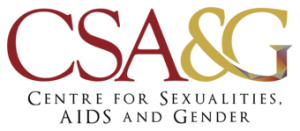
 CSA&G
CSA&G
 USHMM
USHMM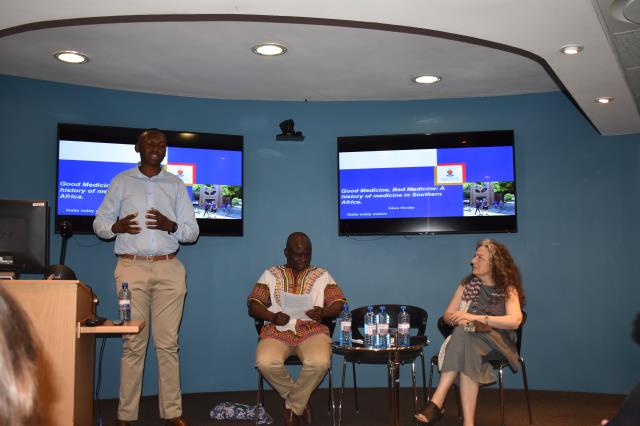


 CSA&G
CSA&G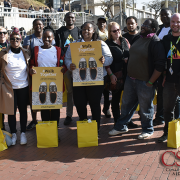
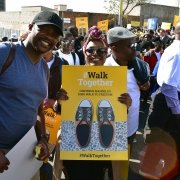
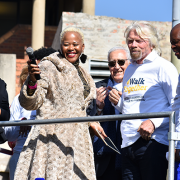
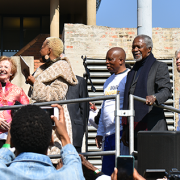
 CSA&G
CSA&G